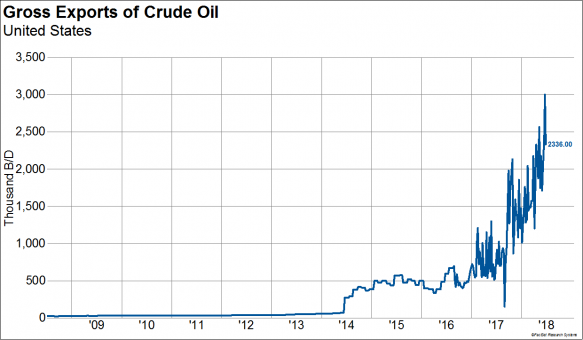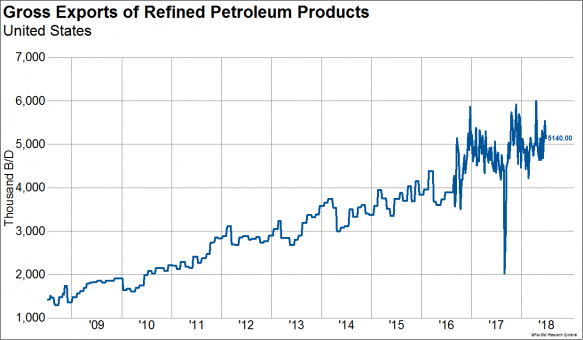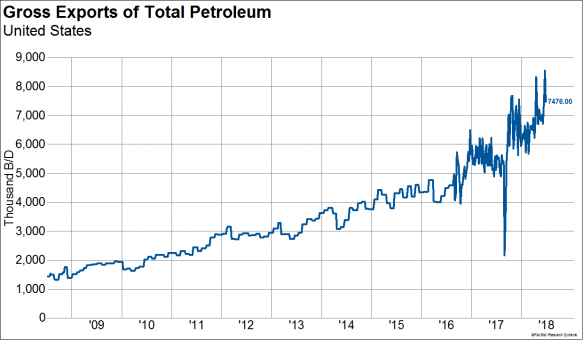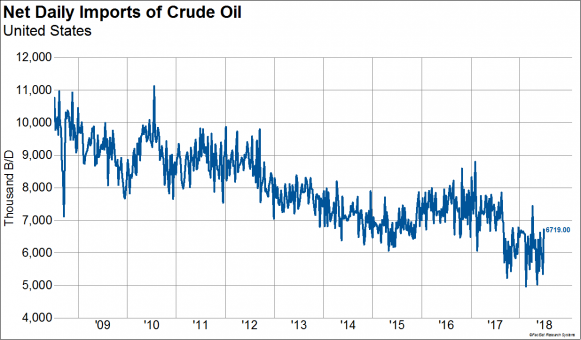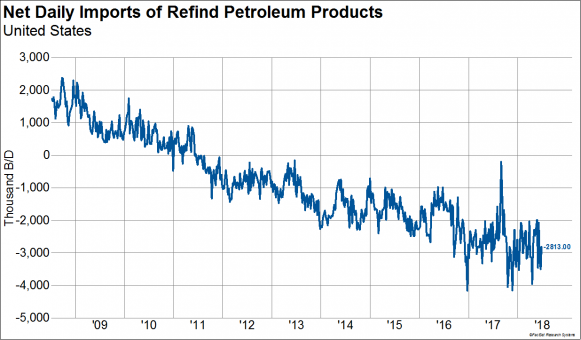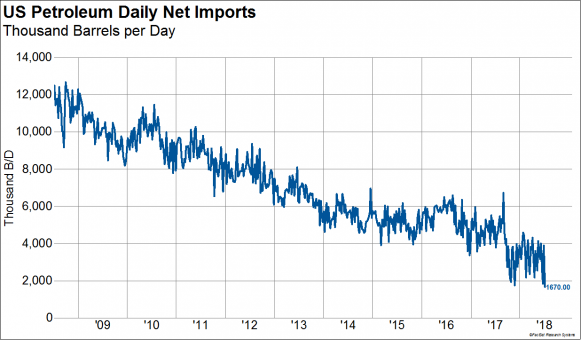Project Independence: Possible this Year if US Petroleum Production Continues to Ramp
July 11, 2018The US shale boom has led to a surge in the production of crude oil, and much of this production has been exported in recent years. In the chart below, I plot the gross exports of crude oil from the US. Beginning with almost nothing several years ago (in part because crude exports were banned until December 2015), US daily crude exports have eclipsed two million barrels per day.
More impressive is the growth in refined petroleum exports. US exports of refined petroleum products now exceed five million barrels per day.
So, the sum of US crude and refined product exports now is almost seven and a half million barrels per day.
This production profile has had a profound effect on US net petroleum imports. The US still imports a considerable amount of crude oil, but crude imports have fallen dramatically in recent years. Crude imports currently are running just under seven million barrels per day, down from eight million barrels per day as recently as 2016.
The US is now a rather large net exporter of refined petroleum products, sending a net 2.8 million barrels per day of refined products (gasoline, kerosene, distillate fuel oil, propane, etc.) to other countries.
If we subtract net refined product exports from net crude imports, we can see that the US is a net importer of only 1.67 million barrels per day. This figure is down from 6 million barrels per day as recently as 2016.
At this pace, it’ll only be a couple years until the US is net energy independent. Interestingly, since refined product sells for a roughly 30% premium to crude oil, and given the size of US refined product exports, the US petroleum trade deficit has shrunk to less than .3% of GDP. This is the lowest petroleum trade deficit since the data begins in 1991. The previous low was .44% in 1999, when crude oil was $10/barrel. At this pace, it is possible that in 2018, the US could see the first trade surplus in petroleum products in modern history.
In November 7, 1973, President Richard Nixon launched “Project Independence,” with the goal of achieving American energy independence by 1980. While it has taken a little longer than expected, US energy independence is possible this year if US petroleum production continues to ramp.
A great book detailing the journey and consequences of American energy independence is Windfall: How the New Energy Abundance Upends Global Politics and Strengthens American Power, by Meghan O’Sullivan.


